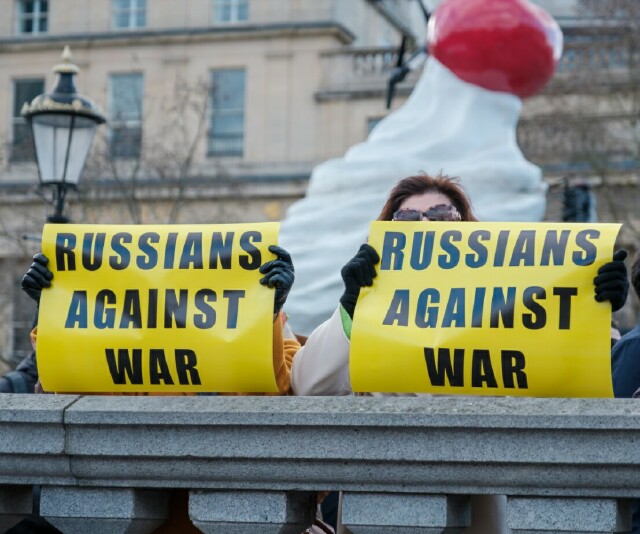Media Coverage of the War: A Commentary on Why Devils are in the Details

News coverage of Vladimir Putin's two-week-old invasion of Ukraine and the Ukrainians' heroic resistance and suffering reflects the power as well as the limits of broadcast journalism in all its forms. As the old adage goes, war is long periods of boredom punctuated by moments of sheer terror. It presents the television medium with a daunting challenge: Its journalism must deliver real-time reporting of crucial events while manufacturing substance to fill the empty hours in-between. Not surprisingly, like the real-world experience of combat 24/7, when it comes to covering a war, what shows up on screen is a mixed picture at best.
For their part, the news networks' reporters in the field have done well to make the best of a chaotic and unpredictable situation. Reporting from cities under siege as well as Ukraine's borders has captured poignantly the commitment of the Ukrainians to defend their homeland, their suffering in flight to safety, and their resilience as Russia's increasingly brutal assaults, frustrated by their exceptional defense, have brought growing destruction to their cities and towns. CNN is particularly noteworthy for its work, deploying an impressive roster of international correspondents whose language skills and area knowledge have distinguished its coverage. A half-a-dozen time zone away their stories on air, along with those of other networks' reporters, have captured well the fears as well as the fortitude of Ukrainians awaiting that night's or next day's increasingly destructive attacks.
Less impressive, the networks continue to treat analysis of the war like presidential election coverage 2.0, trotting out their map walls, paid experts and a potpourri of retired military officers, government officials and academic experts to provide color commentary. Here, too, the challenge comes with the territory. Without reporters literally on the battlefield or unique access to decisionmakers and the commanders on both sides, the best of the retired general officer corps or other "formers" turned commentators can produce are reflections on the same thin gruel. In many cases their insights are exceptionally valuable, but their persistent presence raises a question: What makes it so hard for the networks' producers to find the experts on, among other things, Russian military doctrine, Ukraine's lessons learned after eight years of war in the Donbas, or the weaponry now destroying Russian tanks by the dozen who could provide significant insights into why this war isn't going as Putin planned?
Americans, of course, can dig into those issues with their browser if they choose, but the gap between the often-superficial analysis of the networks' highly paid help and the available facts is striking. As the American role grows in the conflict and in Europe's defense, it's also a level of details that, like it or not, viewers need to know. For those interested, here are several sites courtesy of a LinkedIn member who pointed out where to find such analysis and expertise.
To follow Russian disinformation, Bellingcat provides superb analysis.
To follow Russian equipment losses the Oryx Blog is updated regularly.
Go here for an understanding of Russian operational concepts.
And here to identify different Russian tank models.
The Aviationist will help you understand the Russian air campaign.
Here is an overview of Russia's nuclear posture.
To think about the risks in a NATO no-fly zone, the Swedish Defense University provides a perspective.
For those in the news business or interested in in exploring the war's details, thanks to David Kaplan at the Global Investigative Journalism Network, here are several valuable resources and tools from GIJN, as well.
Investigating Russia -- A GIJN Instant Toolkit: Russia's war on Ukraine has reporters wondering what Moscow is up to in their own countries. This new GIJN toolkit helps them track Russian money, political interference and disinformation around the world. From oligarch planes and yachts to sanctions trackers, you'll find over 20 useful sites here.
15 Tips for Investigating War Crimes: As our team watched apparent war crimes unfold before our eyes in Ukraine, we commissioned this concise guide for journalists on how to document war crimes from targeting civilians to sexual violence. Once a life-threatening task, war crime investigation is easier thanks to open-source reporting.
Bellingcat's Grozev on Russia's Invasion of Ukraine: Christo Grozev, the executive director of Bellingcat, gives his insight on the changing role of reporters in modern-day conflict and discusses how his team is gathering and verifying data while investigating potential war crimes. From the Reuters Institute for the Study of Journalism.
Click the social buttons to share this story with colleagues and friends.
The opinions expressed here are the author's views and do not necessarily represent the views of MediaVillage.com/MyersBizNet.


